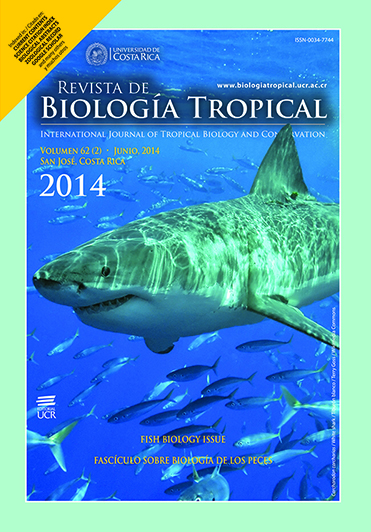Resumen
La ecología trófica de insectos acuáticos ha sido desarrollada en zonas templadas. Sin embargo, la asignación de un taxón a un grupo trófico no representa necesariamente el mismo en otras regiones. En la Región Neotropical, el conocimiento sobre la ecología trófica de larvas de tricópteros es incompleta y la literatura sobre este tema rara vez se ocupa del análisis de los hábitos alimentarios de larvas con datos cuantitativos a nivel de especie. Este trabajo aporta al conocimiento de las características tróficas de la trichopterofauna del Neotrópico. Se describen los hábitos alimentarios de tres especies de Trichoptera registrados en arroyos de Yungas de Argentina y Bolivia: Marilia cinerea, M. elongata y M. flexuosa. Se seleccionaron 15 larvas de cada especie en 13 arroyos de Yungas surandinas para analizar las piezas bucales y el contenido estomacal. El solapamiento de nicho trófico se estimó mediante el índice de Schoener. El análisis de la dieta reveló que las especies difieren en la preferencia de los ítems registrados, hábitat y forma de sus mandíbulas. Las larvas de M. cinerea habitan en superficies de rocas emergentes. Poseen mandíbulas fuertes con grandes zonas molares y consumen principalmente invertebrados. Esta evidencia permite asignarle el grupo funcional depredador. M. elongata consume material fino, sus mandíbulas tienen forma de cuchara y su ubicación en zonas de bajo flujo permite asignarle una estrategia colectora-recolectora. Las larvas de M. flexuosa habitan en fondos arenosos de arroyos de montaña, tienen fuertes piezas bucales en forma de cuchara y una dieta dominada por hojarasca y material fino. Pertenecen al grupo funcional triturador, secundariamente colector-recolector. Sugerimos que la asignación de grupo funcional a nivel de género no es recomendable para Marilia. Se recomiendan mayores estudios a nivel de especie.
##plugins.facebook.comentarios##

Esta obra está bajo una licencia internacional Creative Commons Atribución 4.0.
Derechos de autor 2014 Revista de Biología Tropical


